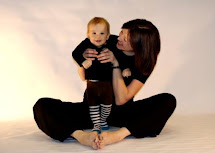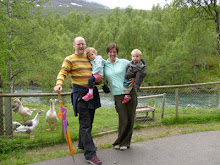| Turkeys in their natural state
Turkeys have a zest for living and, treated with respect, they become very friendly. Turkeys have large, dark, almond-shaped eyes and sensitive fine-boned faces. Wild turkeys live in North and Central America. They are striking and handsome, graceful and intelligent. They roost in trees and roam in woodlands, eating vegetation and insects. They live in harems - the mothers being very protective of their young. An adult bird can fly up to 50mph. Conditions in turkey farms
There are two main systems of turkey rearing:
a. Windowless units. The most common system where as many as 25,000 turkeys are kept in one shed. The birds are crowded together like broiler chickens, on a litter floor. Many develop ulcerated feet and painful burns on their legs and breasts as they spend their short lives standing on litter which often becomes wet, dirty and produces ammonia. Lighting is dim to discourage aggression.
b. Pole barns. These allow daylight and ventilation but conditions are still grossly overcrowded. Stress causes fighting and birds attack each others eyes and toes. Slaughter age
Turkeys would live up to 10 years in the wild. Farmed turkeys are usually slaughtered between the ages of 12 and 26 weeks, although according to DEFRA some are as young as eight weeks.  Mortality rate
6%- 15% of turkeys die in sheds each year. Many die because they never learn to reach the food and water points (‘starve-outs’). Others die from disease or as a result of growing too quickly. Aggression
Turkeys peck at each others feathers, toes and eyes when overcrowded. Sometimes their eyeballs are destroyed by the pecking. Cannibalism can be common in intensive farms. Turkeys are often kept in near darkness to discourage cannibalism. In the wild, turkeys would not be aggressive but on factory farms birds are driven to aggression by the conditions in which they are kept.
 Mutilation
Debeaking is considered essential to many turkey rearers. 10% of all turkeys are debeaked (DEFRA, Oct 2001) When turkeys are only a few days old, their beaks are partially amputated, a section of the upper beak being cut off with a red-hot blade or with clippers. Potential breeding stock are debeaked again at around 16 weeks, and sometimes at a later stage too. Beak trimming is painful and can result in permanent pain. Research at the AFRC Institute of Animal Physiology and Genetics Research, Edinburgh, indicates that debeaking results in chronic pain similar to ‘phantom limb pain’ in human amputees. Birds have been observed, over a 56 week period, to show signs of behaviour associated with long-term chronic pain and depression, following partial beak amputation.
(“Behavioral Evidence for Persistent Pain Following Partial Beak Amputation in Chickens” - Michael Gentle et al, Applied Animal Behaviour Science, 27 (1990) 149-157). Toe removal is also performed on male breeding birds which can result in open wounds, blood loss and pain. Desnooding is practiced to minimalise cannibalism. This is where the long fleshy appendage extending from the front of a turkey’s head over its upper back is removed with an instrument or pulled off. When farmers want to prevent turkeys from flying, dewinging is carried out where the flight feathers of one wing may be clipped. Slaughter
22 million turkeys are killed each year in licensed plants with an estimated 10 million being killed at Christmas (based on consumption figures, DEFRA, 23/10/2001).
Including small-scale enterprises which slaughter on premises, 35 million turkeys are killed in the UK every year. (Meat Hygiene Service, 1998) According to the Meat Hygiene Service (MHS), there are 50 slaughterhouses licensed to kill turkeys. 34 out of 50 plants stunning turkeys use the electric waterbath. Others use gas stunning and very low throughput premises tend to use an electric hand-held stunner. UK slaughter legislation states that birds may be killed by decapitation or dislocation of the neck. These procedures do not require a license provided that they are carried out on premises forming part of an agricultural holding on which the bird was reared. Decapitation is not widely practiced but neck dislocation is the most widely used method of slaughter on small-scale enterprises. Scientists Gregory and Wotton expressed concern about the effectiveness of neck dislocation in poultry. They tried crushing and stretching the necks of poultry (method 2 works in a similar manner to manual neck dislocation) and concluded that, “neither method consistently produced concussion and it is uncertain whether they cause instantaneous unconsciousness.”
(N. G. Gregory, S. B. Wotton, 1990. Comparison of neck dislocation and percussion of the head on visual evoked responses in the chicken’s brain. The Veterinary Record 126, 570-572). Researcher Roger McCamley says that, “There is certainly a potential for welfare problems to arise when small scale seasonal producers kill large birds by neck dislocation. Usually, no training will have been sought or received and because of the small number and infrequency of slaughtering, little expertise in slaughter will be obtained.”
R. McCamley, 1992. The welfare aspects of poultry slaughter on farms. The Meat Hygienist, December edition, 5-11. If turkeys are not killed on the farm at which they are reared, they are transported live to a processing plant. Turkeys are caught from the rearing sheds and stuffed into crates for transportation to the slaughterhouse. Rough handling often causes severe bruising and injury. At the slaughterhouse the birds are hung upside down with their feet in shackles for up to six minutes before they are stunned (DEFRA, 2001). Birds are in great distress at this time, especially those with diseased hip joints or legs. The shackled turkeys move to an electrically-charged water bath through which their heads and necks pass. The electric shock is meant to stun the birds. Turkeys tend to arch their necks at slaughter and may not be stunned before they reach the neck cutter. Each year, conservative estimates suggest that around 30-40,000 will enter the scalding tank alive. Around 43% of birds will receive painful electric shocks before being stunned because their wings touch the electrically-charged waterbath.¨  Breeding
Only a few breeding companies now supply most turkeys reared worldwide - British United Turkeys, Nicholas and Hybrid Turkeys. Reproduction in today’s turkey industry is by artificial insemination (AI). The modern turkey, like the broiler chicken, has been genetically selected to put on weight twice as fast as its counterpart in the wild. Now, male turkeys are too broad-breasted to mate naturally. In the wild, the turkey can fly up to speeds of 50mph, yet the modern male farmed variety cannot fly. Breeding turkeys can weigh as much as an 8-9 year old child (60lbs). Collecting the semen
2 or 3 times a week the males are ‘milked’ of their semen by teams of operators whose jobs are to manipulate the males’ anal area until the phallus is erect (a form of human-to-bird masturbation) and semen is ejected, helped along by the pressure on the lower abdomen. Insemination of the females
Female turkeys are caught and held upside down, while semen is introduced into the vagina by hypodermic syringe or the operator’s breath pressure, through a length of tubing. The repeated stress imposed by AI is extreme and unacceptable in welfare terms. Eggs and chicks
All factory farmed turkeys never meet their mothers. Fertile eggs are transferred to the hatchery. After 28 days in an incubating cabinet the poults are hatched. At a day old the turkey chicks are transported to growing sheds with up to 25,000 chicks the same age. The lighting is dim and the heat is kept permanently high. Many chicks die from heat, stress, heart attack or bullying. Disease
Most turkeys suffer from degeneration of the hip joints. In the ball and socket mechanism of this joint, much of the weight is distributed through a pad of cartilage. Under the stress of carrying an unnaturally heavy body, the structure breaks down, leading to degeneration of the joint. This leads to severe lesions and pain. Dr Colin Whitehead of the Agricultural and Food Research Council states that 70 per cent of the heavier birds are ‘suffering pain rather than just discomfort’. The last decade has thrown up numerous examples of new diseases in turkeys. These include Rhinotracheitis, Paramyxovirus 2, and Salmonella enteritidis - a major new bacterial source of human food poisoning that can cause arthritis, blood disease, impaired immunity and death. Other diseases include Blackhead disease, Ornithobacterium rhinotracheale and Avian Influenza. Turkeys are reared to be pathalogically obese. They have clogged coronary vessels, distended fluid-filled pericardial sac, abdominal fluid and a gelatin-covered enlarged congested liver. Their hearts can actually explode. Artificial insemination spreads fowl cholera, a major bacterial disease of intensively reared turkeys. Drugs
Throughout their lives, turkeys may be given antibiotics and other drugs to prevent or treat infections caused by worms, fungi, bacteria and other microbes. More than a dozen antibiotics are approved for use in chickens and turkeys, including erythromycin, penicillin, tetracycline and virginiamycin. Help stop the suffering - Action: - The most effective step that you can take is to stop eating turkey and to ask your family to have a meat free Christmas. Contact Viva! for free veggie Christmas recipe leaflets - view them online here.
- Viva! has organised a nationwide door drop asking people to have a turkey free Christmas and offering free Christmas packs. Please help Viva! get the ‘cruelty free Christmas’ message out by distributing Viva! turkey leaflets through doors in your neighbourhood. Contact Viva! for free leaflets.
- Give out ‘Turkey free Christmas’ leaflets outside your local supermarkets and butchers shops. Contact Viva! for posters to make placards and to put in your window at home.
- For more info on turkeys and for information on how to go veggie and other campaigns, look on our website or phone or write to Viva! for a free veggie info pack.
| ![]()
![]()




1 comments:
This cruelty to turkeys and animals in particular has to stop. God would definitely not approve of such acts of humans in the name of Christmas or Thanksgiving.
Post a Comment